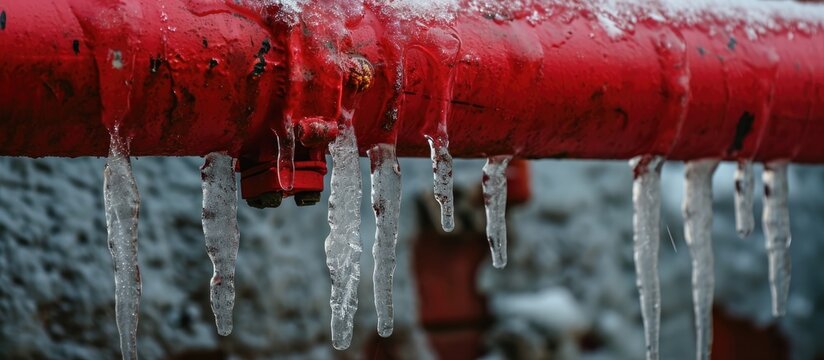Ways to Keep Pipes from Freezing Issues: Essential Tips
Ways to Keep Pipes from Freezing Issues: Essential Tips
Blog Article
We have encountered this article involving Preventing and dealing with frozen pipes below on the net and concluded it made perfect sense to talk about it with you on this page.
:strip_icc()/snow-outdoor-faucet-pipes-4af65d1e5e904fb1aa7bf74071fe5d89.jpg)
Winter can ruin your plumbing, especially by freezing pipelines. Below's exactly how to avoid it from occurring and what to do if it does.
Introduction
As temperature levels drop, the risk of icy pipelines boosts, possibly bring about pricey repair services and water damages. Comprehending how to avoid icy pipes is critical for home owners in cold environments.
Recognizing Frozen Pipes
What causes pipes to freeze?
Pipelines ice up when subjected to temperatures below 32 ° F (0 ° C) for prolonged durations. As water inside the pipelines freezes, it broadens, taxing the pipeline walls and potentially causing them to rupture.
Dangers and problems
Icy pipelines can lead to water supply disturbances, building damages, and expensive repair work. Ruptured pipes can flooding homes and trigger substantial structural damages.
Signs of Frozen Piping
Recognizing frozen pipelines early can stop them from rupturing.
Exactly how to determine frozen pipes
Seek decreased water circulation from taps, unusual odors or noises from pipes, and visible frost on exposed pipelines.
Avoidance Tips
Protecting prone pipelines
Wrap pipelines in insulation sleeves or utilize warmth tape to secure them from freezing temperature levels. Concentrate on pipelines in unheated or exterior locations of the home.
Heating techniques
Keep interior areas properly warmed, particularly locations with plumbing. Open up closet doors to permit warm air to distribute around pipes under sinks.
Safeguarding Outside Plumbing
Yard tubes and outdoor taps
Detach and drain garden tubes before winter months. Set up frost-proof spigots or cover outdoor faucets with insulated caps.
What to Do If Your Pipelines Freeze
Immediate activities to take
If you believe icy pipelines, keep taps available to soothe stress as the ice thaws. Use a hairdryer or towels soaked in warm water to thaw pipes gradually.
Long-Term Solutions
Structural adjustments
Think about rerouting pipelines far from exterior walls or unheated locations. Add added insulation to attic rooms, cellars, and crawl spaces.
Upgrading insulation
Buy high-grade insulation for pipelines, attics, and wall surfaces. Correct insulation helps keep constant temperatures and decreases the threat of frozen pipes.
Conclusion
Stopping frozen pipes requires proactive actions and quick responses. By understanding the reasons, indicators, and safety nets, property owners can protect their plumbing throughout cold weather.
5 Ways to Prevent Frozen Pipes
Drain Outdoor Faucets and Disconnect Hoses
First, close the shut-off valve that controls the flow of water in the pipe to your outdoor faucet. Then, head outside to disconnect and drain your hose and open the outdoor faucet to allow the water to completely drain out of the line. Turn off the faucet when done. Finally, head back to the shut-off valve and drain the remaining water inside the pipe into a bucket or container. Additionally, if you have a home irrigation system, you should consider hiring an expert to clear the system of water each year.
Insulate Pipes
One of the best and most cost-effective methods for preventing frozen water pipes is to wrap your pipes with insulation. This is especially important for areas in your home that aren’t exposed to heat, such as an attic. We suggest using foam sleeves, which can typically be found at your local hardware store.
Keep Heat Running at 65
Your pipes are located inside your walls, and the temperature there is much colder than the rest of the house. To prevent your pipes from freezing, The Insurance Information Institute suggests that you keep your home heated to at least 65 degrees, even when traveling. You may want to invest in smart devices that can keep an eye on the temperature in your home while you’re away.
Leave Water Dripping
Moving water — even a small trickle — can prevent ice from forming inside your pipes. When freezing temps are imminent, start a drip of water from all faucets that serve exposed pipes. Leaving a few faucets running will also help relieve pressure inside the pipes and help prevent a rupture if the water inside freezes.
Open Cupboard Doors
Warm your kitchen and bathroom pipes by opening cupboards and vanities. You should also leave your interior doors ajar to help warm air circulate evenly throughout your home.

Do you really like reading up on How To Avoid Freezing Pipes? Leave feedback down the page. We'd be delighted to find out your suggestions about this blog post. In hopes that you visit us again soon. If you enjoyed reading our post kindly remember to share it. We appreciate reading our article about 6 Ways to Prevent Frozen Pipes.
Estimate Report this page